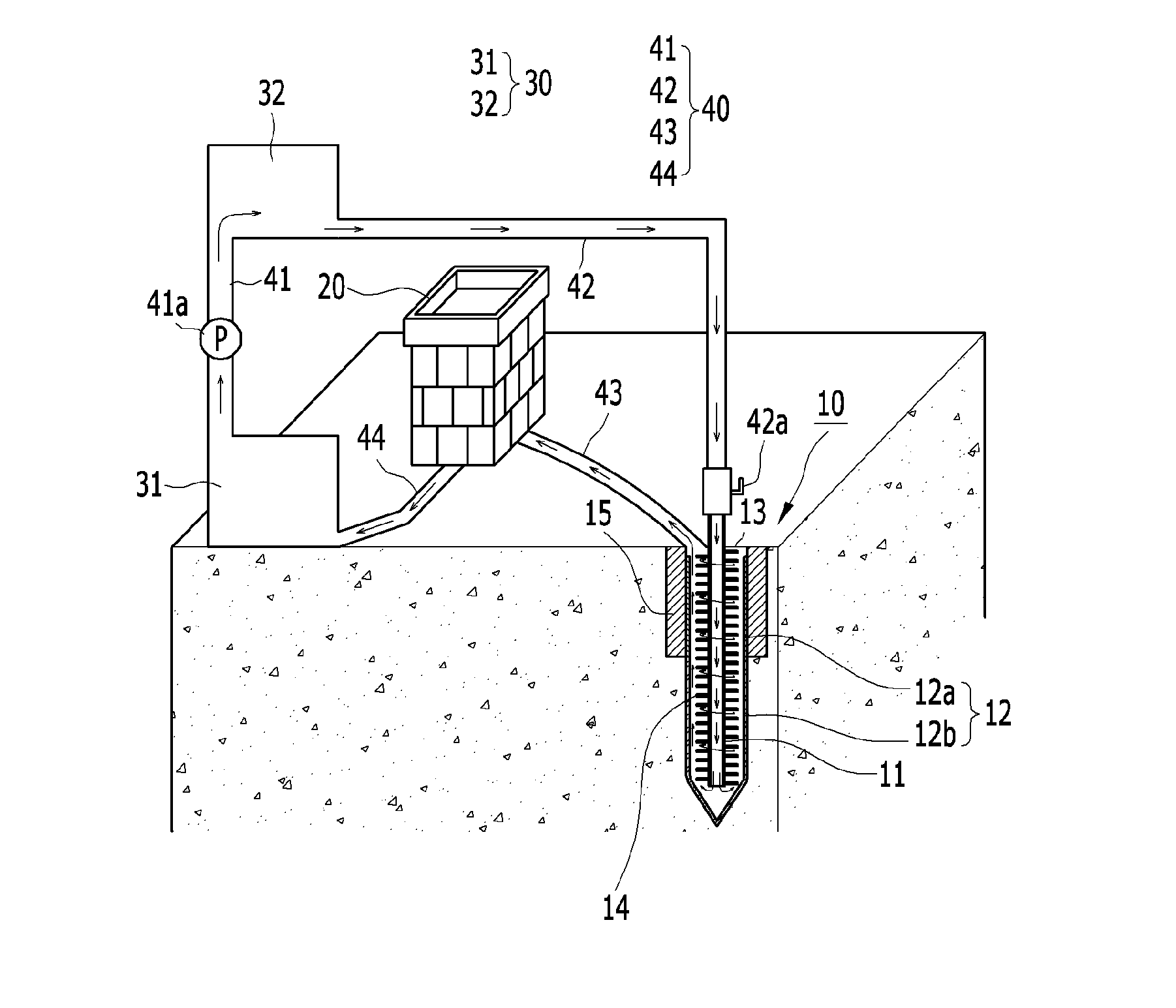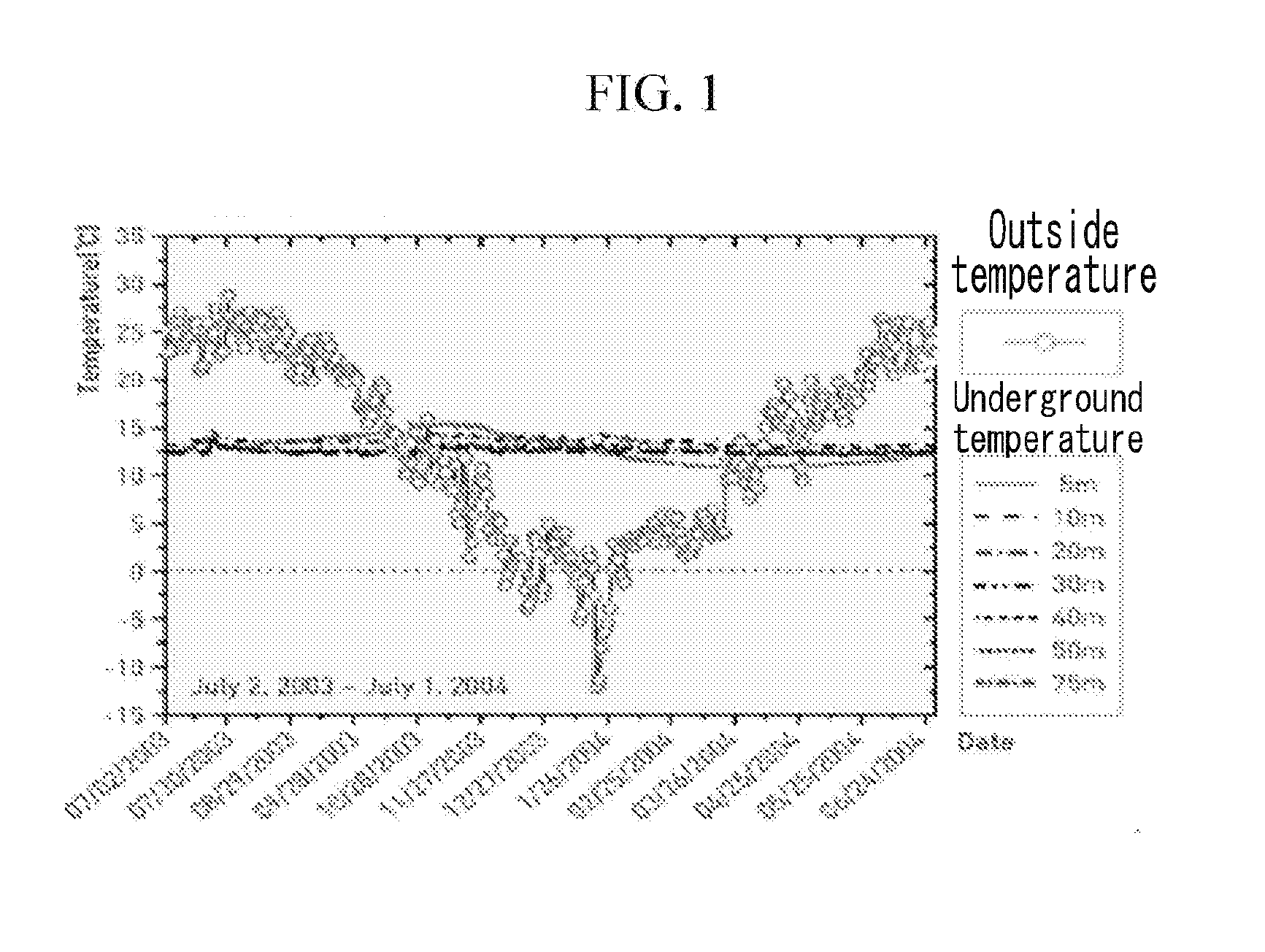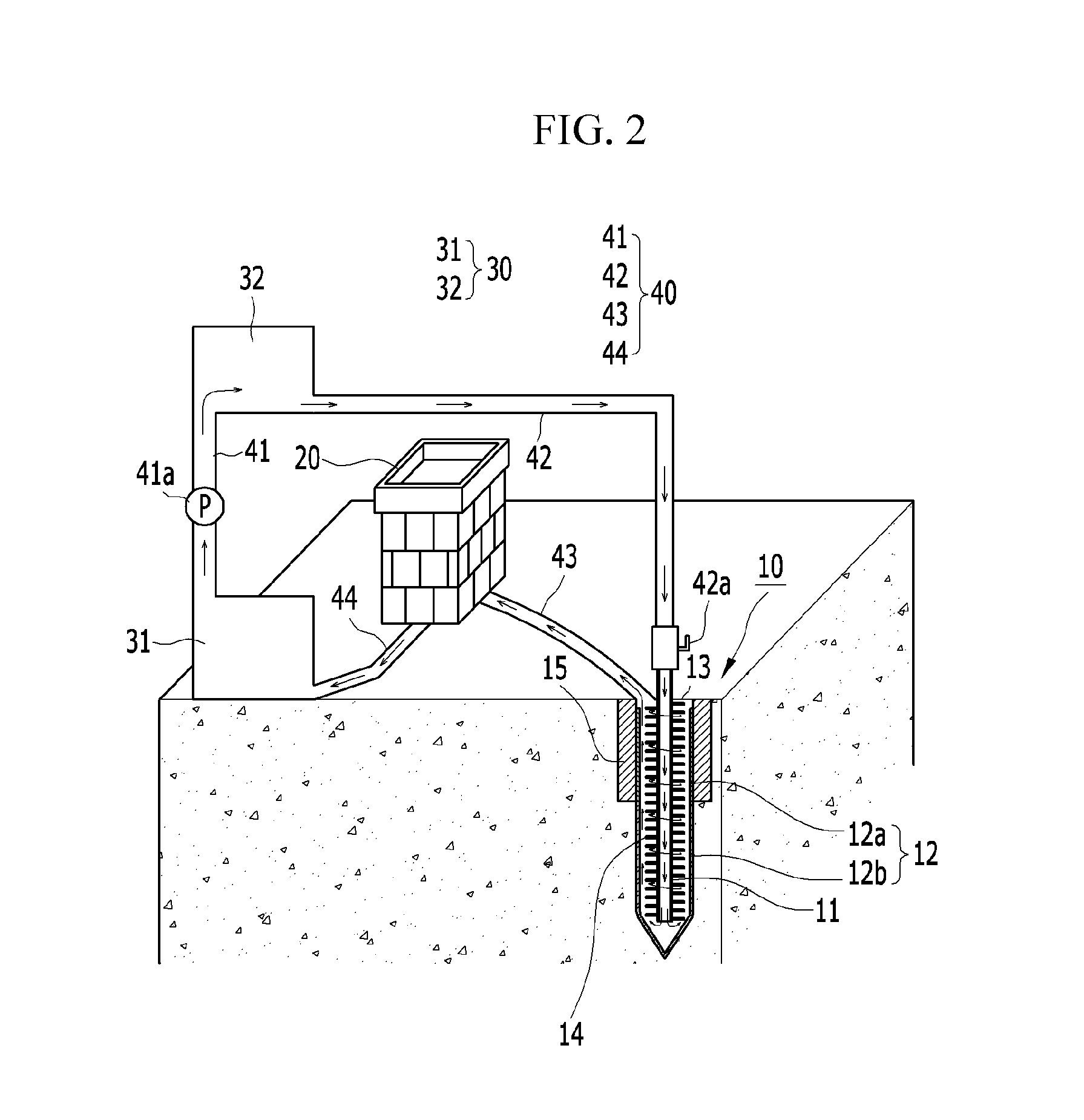Underground heat-exchange system
a heat exchange system and heat exchange technology, applied in the field of underground heat exchange systems, can solve the problems of affecting water quality, polluting the atmosphere, wind, solar and geothermal energy sources, though unlimited in quantity, and not reaching the energy density to substitute fossil fuels, etc., to achieve the effect of improving the efficiency of energy consumption, reducing management and maintenance costs, and improving energy consumption
- Summary
- Abstract
- Description
- Claims
- Application Information
AI Technical Summary
Benefits of technology
Problems solved by technology
Method used
Image
Examples
Embodiment Construction
[0043]Hereinafter, the technical configuration of an underground heat exchange system according to an exemplary embodiment of the present invention will be described in detail with reference to the attached drawings.
[0044]First, as illustrated in FIG. 2, the underground heat exchange system according to the exemplary embodiment of the present invention includes a ground heat exchanger 10 for converting a heat transfer medium into a usable form, a heat consumption area 20, and a medium collector 30 that collects the heat transfer medium that has dispersed its heat via the heat consumption area 20.
[0045]A circulation loop 40 is provided among the ground heat exchanger 10, heat consumption area 20, and medium collector 30 to form a closed loop for circulating the heat transfer medium.
[0046]The ground heat exchanger 10 has a double-pipe structure that is buried underground, which allows for smooth heat transfer between the heat transfer medium and the ground.
[0047]The medium collector 3...
PUM
 Login to View More
Login to View More Abstract
Description
Claims
Application Information
 Login to View More
Login to View More - R&D
- Intellectual Property
- Life Sciences
- Materials
- Tech Scout
- Unparalleled Data Quality
- Higher Quality Content
- 60% Fewer Hallucinations
Browse by: Latest US Patents, China's latest patents, Technical Efficacy Thesaurus, Application Domain, Technology Topic, Popular Technical Reports.
© 2025 PatSnap. All rights reserved.Legal|Privacy policy|Modern Slavery Act Transparency Statement|Sitemap|About US| Contact US: help@patsnap.com



